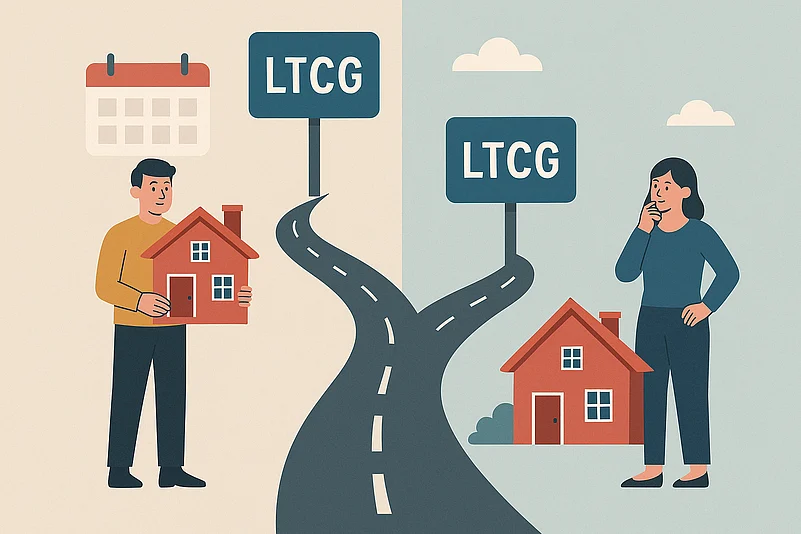
Summary of this article
New LTCG tax choice: 12.5 per cent flat or 20 per cent with indexation benefit.
Older properties usually gain more from indexation due to inflation adjustment.
Lower capital gains may favour the 12.5 per cent flat tax option.
Accurate tax comparison is crucial to avoid disputes and optimise savings.
"The Finance (Number 2) Act, 2024 has allowed the resident Individuals and Hindu Undivided Families (HUFs) selling residential property, purchased before July 23, 2024, to choose, either the tax rate of A) 12.5 per cent flat rate without indexation benefit or B) 20 per cent with the indexation benefit on the long term capital gains (LTCG) arising from such sale of residential property. In this regard, it is necessary to note that indexation typically means adjusting the effect of inflation on the specific value of a property," says Kunal Savani, Partner, Cyril Amarchand Mangaldas.
Savani gives examples:
Suppose a resident taxpayer (individual) bought a property on April 1, 2012, for Rs 30 lakh and sold it on August 1, 2025, for Rs 1 crore. Let's assume that the Cost Inflation Index (referred to as "CII") for the year 2012-13 is 200 and for the year 2025-26 is 376, then:
A. If such a taxpayer chooses a flat rate of 12.5 per cent, i.e, without indexation benefit:
LTCG: 1,00,00,000-30,00,000 = 70,00,000
Tax: 70,00,000 X 12.5 per cent = Rs 8,75,000
B. If such a taxpayer chooses a rate of 20 per cent with the indexation benefit:
Indexed cost: 30,00,000 X (376/200) = 56,40,400
LTCG: 1,00,00,000-56,40,600 = 43,60,000
Tax: 43,60,000 X 20 per cent = Rs 8,72,000
From the above, Option B still results in slightly lower tax than Option A. In this case, the taxpayer can opt for the 20 per cent rate with an indexation benefit.
Tax Choice Depends On Gains And Property Age
It is observed that older properties benefit more from the indexation due to inflation. "Therefore, a taxpayer should ideally compute tax under both options and then choose the one that is more beneficial," says Savani.
"The higher the capital gains, the indexation method will result in lower tax savings. For a smaller capital gains amount, the flat rate of 12.5 per cent will make even more sense. The property seller should keep various factors in mind before opting for calculation to be done with indexation benefit with 20 per cent tax or at a lower tax rate of 12.5 per cent," says Deepak Kumar Jain, Founder and CEO of TaxManager.in, a tax advisory and e-filing portal.
Capital Gains Relief Comes With A New Layer Of Complexity
The government aimed to streamline the capital gains tax regime by bringing this flat rate for LTCG, but doing this suddenly especially for residential properties would have been too harsh a burden with severe implications, therefore this option has been given just to ease out the changes such that it doesn't become too financially challenging, since gains in real estate tend to be much more material.
"This could pose challenges for taxpayers to ensure that they determine accurate tax calculations in both regimes to arrive at what gives them a lower tax liability. It could also lead to issues/ disputes with the department regarding interpretation of capital gains exemptions," says Ritika Nayyar, Partner, Singhania & Co.










